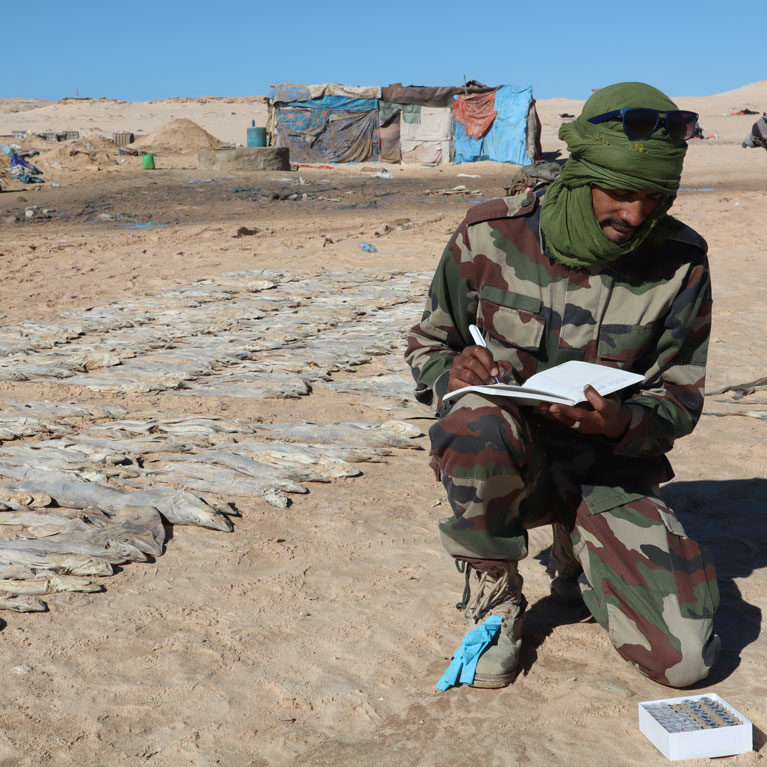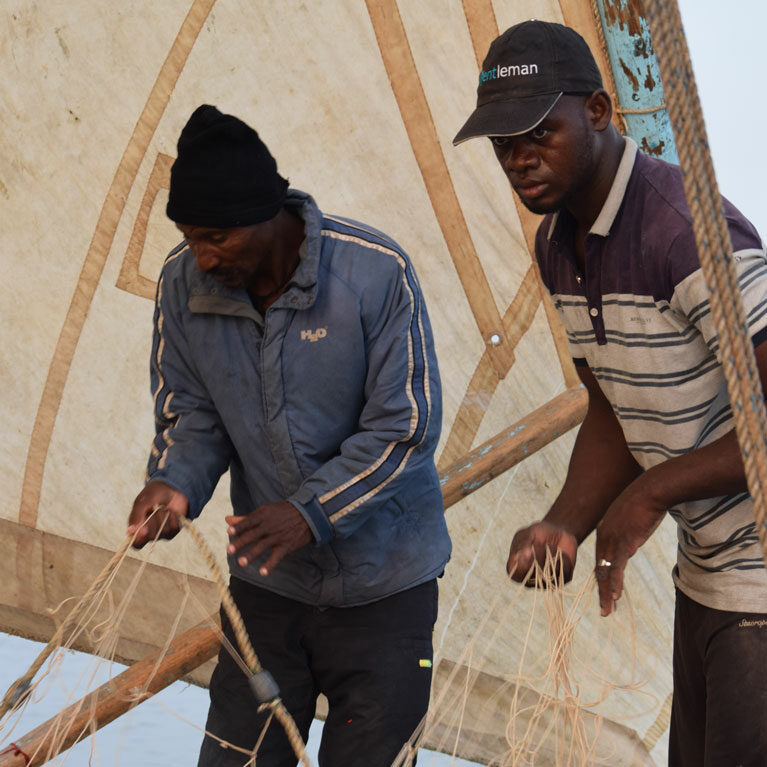Taxonomy and phylogeny of sharks and rays in Mauritania
Banc d’Arguin, a shallow bay in Mauritania’s National Parc du Banc d’Arguin, is home to many vulnerable shark species. As many as two thirds of these are threatened with extinction. A law passed in 2000 granted exclusive fishing rights in the bay to the indigenous Imraguen fishers. Despite a further ban on shark and ray fishing, as much of 50% of the Imraguen fishers’ catches are still elasmobranchs. Carolina is assessing shark and ray diversity in the bay, improving data collected by local fishers through identification training and raising awareness among the local community about the plight of elasmobranchs.
I grew up in Madrid, nowhere near the sea. When I was young I had nightmares about sharks in our swimming pool and was afraid to venture into the ocean because of my unfounded but nonetheless terrifying fears. Unbeknown to me at the time, it was these fears that would fuel my scientific curiosity when I later attended the University of Innsbruck to obtain an undergraduate degree in biology. While a student I decided to become a certified scuba diver – and then everything snowballed. My first encounter with a shark under water was nothing short of magical! I gained...


Taxonomic revision and phylogeny of sharks and rays off the Banc d’Arguin, Mauritania
To clarify taxonomic ambiguities of shark and ray species in the Banc d’Arguin and to identify hidden diversity in the region in order to provide a baseline for the future monitoring of fisheries, bio-monitoring surveys and conservation efforts that rely on correct species identification.
Elasmobranchs in the Banc d’Arguin are an understudied marine resource that has long been overexploited, in spite of an existing ban on shark and ray fishing. However, the region has been recognised as an important pupping, nursery and feeding ground for some species and is presumed to represent an essential habitat for many other threatened species. Hence, to paraphrase Baba Dioum: ‘We will conserve only what we love, and love only what we understand.’
The diversity of elasmobranch species in West Africa has been poorly studied, especially in the Banc d’Arguin, a large shallow bay in northern Mauritania, which became the Parc National du Banc d’Arguin in 1976 and is the largest marine protected area in West Africa. Most research in the area has focused on its migratory and local bird populations, for which the Banc d’Arguin is an important habitat. It has also been described as a shark sanctuary, but targeted elasmobranch fisheries, both artisanal and commercial, existed in the region before the establishment in 2000 of a law that granted exclusive fishing rights to the indigenous Imraguen fisher community to protect and preserve the park’s natural resources. When populations continued to decrease, however, fishing for sharks and rays was banned in a joint effort by park management and the Imraguen to protect these resources. Houndsharks and elasmobranchs caught as bycatch were excluded from the ban. Nevertheless, elasmobranchs still make up between 35% and 50% of landings from the Imraguen fisheries sector. In addition, as is often the case in developing countries, few species are reported to species level, which makes it difficult to estimate with any accuracy species diversity and abundance in catches. The Parc National du Banc d’Arguin is home to a large number of threatened species and, according to a recent study, as many as two-thirds of its overall species are threatened with extinction. Some rare species have reportedly not been sighted or landed in several years, even decades, and are believed to be regionally extinct. Recent findings also suggest the presence of new, undescribed species and the possible existence of cryptic lineages, as well as a range extension for species previously unconfirmed from the area.
To combine scientific research and local capacity to:
- Fill gaps in knowledge about the diversity of local shark and ray species by means of molecular identification methods.
- Address the need to improve the collection of data about species at fish landing sites by training local observers and fishers in sampling methods and species identification.
- To raise awareness among stakeholders and in the local community about conservation issues associated with sharks and rays.
Summary of main research results/outcomes
The diversity of sharks and rays in Mauritania and the Banc d’Arguin is higher than previously estimated, with potentially several cryptic species present in national waters that are currently not assessed or reported. These include species in the Gymnura,
Raja, and Rhinoptera genera, and require further research. Furthermore, Mustelus
samples collected throughout all seasons were all genetically identified as M.
punctulatus, while historically, M. mustelus is the only smoothound species reported
from national fisheries. This puts current accepted distribution patterns and geographic
ranges of both species into question and warrants further research to determine the
presence or absence of both species along the Eastern Atlantic coast.
Overall, while several species appear to have gone locally extinct or near-extinct, the
region holds a lot of potential for hidden diversity that needs to be explored.

